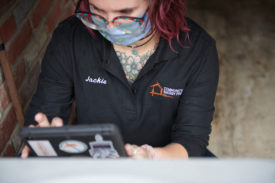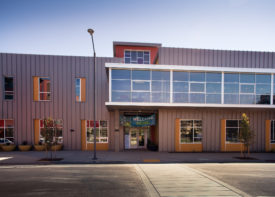Anna:
I enjoyed David Remnick’s profile of Springsteen (at age sixty-two) in the New Yorker. It’s a look back and a snapshot of where Bruce is today. Here’s Bruce’s explanation of why his exuberant live performances are still critical:
For an adult, the world is constantly trying to clamp down on itself. Routine, responsibility, decay of institutions, corruption: this is all the world closing in. Music, when it’s really great, pries that shit back open and lets people back in, it lets light in, and air in, and energy in, and sends people home with that and sends me back to the hotel with it. People carry that with them sometimes for a very long period of time.
Anybody who’s seen Springsteen in concert knows what he’s talking about.
Did you know that the more paper waste a country generates, the richer it’s likely to be? To find out more fascinating facts about trash as an economic indicator—and to see how American garbage compares to that of other countries—check out Mother Jones’ maps and charts.
A junk food attitude toward place?
Pop-Ups in San Fran? Temporary businesses in urban retail “deadspace” revitalize neighborhoods (a café, a yoga studio, a library—all with that get-it-while-you-can if you’re in-the-know hipness factor).
And two interesting reads from Scientific American:
Solar helped keep at least some of the lights on during the grid failures in India that put 10 percent of the world’s population in blackouts—but not where you might think.
Is objectification hardwired? New research shows that our brains see men as whole and women as parts. Brains of both genders do this.
Clark:
Sightline reader Bill Basford sends in news about the other Portland: car ownership in Maine’s largest city has fallen dramatically over the last few years.
A brief news article in the Portland Press Herald on Wednesday, July 25, 2012, reports that the number of automobiles registered in the city fell by 23% over the past seven years, from 49,900 in 2004 to 38,200 in 2011…The trend started well before the Great Recession, with the greatest declines coming in the first five years, from 2004 to 2009.
As Basford notes, the official numbers suggest that per capita car ownership has declined by over one-quarter. That’s a surprisingly large drop in car ownership. I will say, though, that vehicle registration numbers are notoriously fickle—so perhaps it’s too early to think about Portland, ME as a model for other small-to-midsized cities. Still, the news is good all around: Portland’s economy seems to be doing well, with lower unemployment rates than in the Portland of the Northwest. And Basford even points out that the decline in car ownership may be at least partially responsible for Portland’s comparatively rosy economy: buying, maintaining, and fueling cars costs a lot of money; and since Maine has no oil refineries, oil wells, or car assembly plants, most of the money spent on cars gets shipped out of the state. So a decline in car ownership keeps more money in Portland, circulating among local businesses and residents.
Over at the Human Transit blog, Sightline intern Alex Broner gives Cities in Motion, a transit simulation game in the style of Sim City, a mixed review:
[The game] obsesses over certain aspects of transit…while failing to address some really important ones. It teaches some important things about transit (frequency, density, operation costs) while furthering our confusion about the relationship between technology and levels of service. I would love for the makers of the game to fix some of these problems either through downloadable content or a new release. We need clearer thinking when it comes to transit and while this game doesn’t quite provide it, it very easily could.
Nicole:
I’m fascinated by cities that seem like dreams brought into real life, and liked this interview with Marfa, TX resident David McDannald:
One day, I was getting a haircut on Highland from Mateo, whose barber chair was his father’s. I asked him about how Marfa has changed, about the old buildings reclaimed and decked out as art installations, about Prada Marfa, the faux storefront built on an empty stretch of highway with a display of designer shoes. Mateo said, ‘I just wish people would put in something we can actually use, like a pharmacy.’ A retired Border Patrolman put it more bluntly, ‘All the change used to give me heartburn. But these art people saved this town. I just wish they would realize we’re not ready for some of the things we see in the street.’
Speaking of art people, I met a group of brothers on a recent walking adventure who completed “We Make the Road by Walking,” a project where they explored the entire proposed California high speed rail route from Los Angeles to San Francisco at a walker’s pace.
Eric H:
Check out this live feed of brown bears hunting salmon at Brooks Falls, AK.
And a new sociology study details the ways we deter others from sitting next to us on the bus.








